Visual discrimination Geometry Worksheets for Ages 3-9
9 filtered results
-
From - To
Enhance your child's visual discrimination skills with our engaging Geometry Worksheets designed for ages 3 to 9! These thoughtfully crafted printable worksheets offer young learners the opportunity to identify, compare, and classify shapes and patterns, fostering critical thinking and observational abilities. Kids will enjoy fun, interactive activities that challenge them to recognize similarities and differences among geometric figures. Ideal for use at home or in the classroom, our worksheets help build a strong foundation in geometry while keeping learning enjoyable. Empower your child's learning journey with our Visual Discrimination Geometry Worksheets and watch them thrive in their math skills!
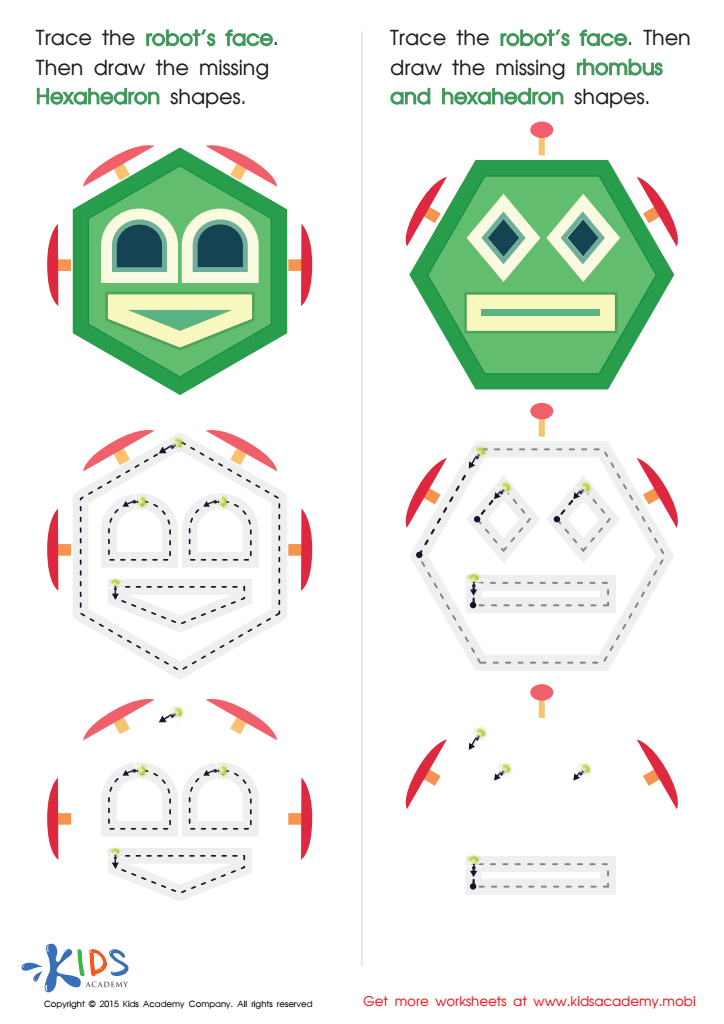

Practice Drawing Hexahedrons And a Rhombus Worksheet
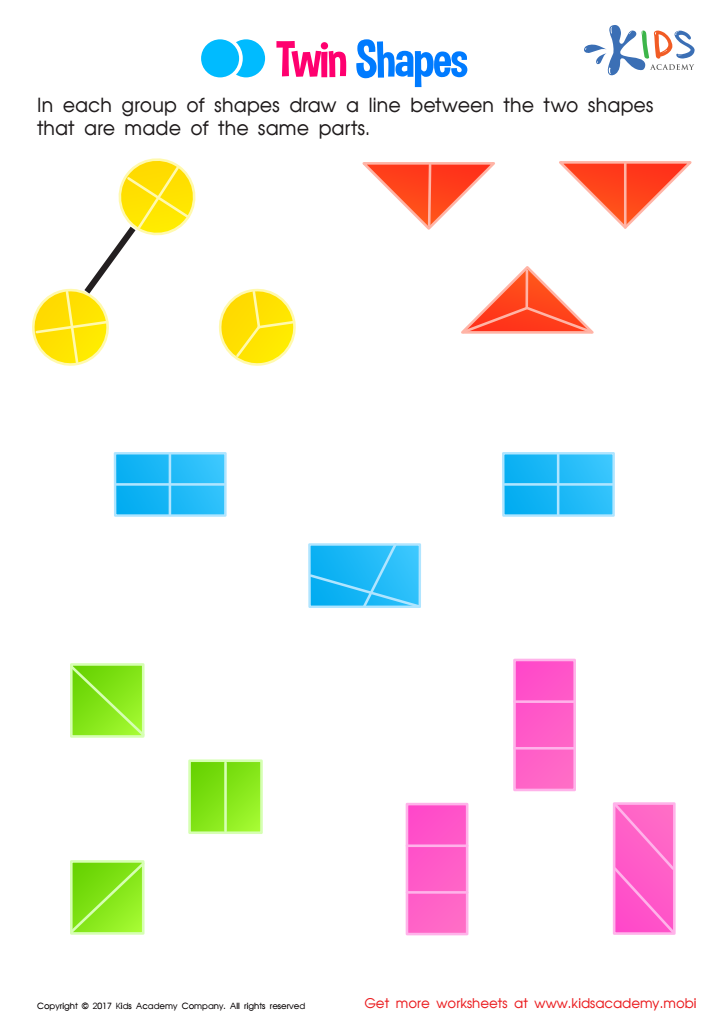

Twin Shapes Worksheet
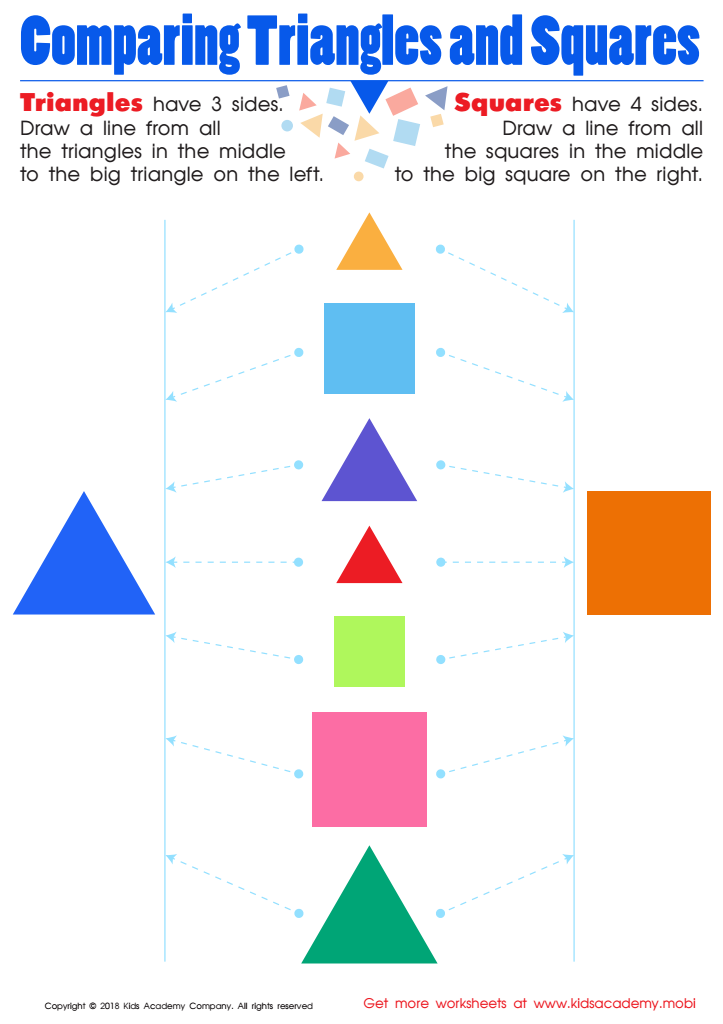

Comparing Triangles Squares Worksheet


Animal Shadows Sorting Worksheet


Congruent Shapes Worksheet
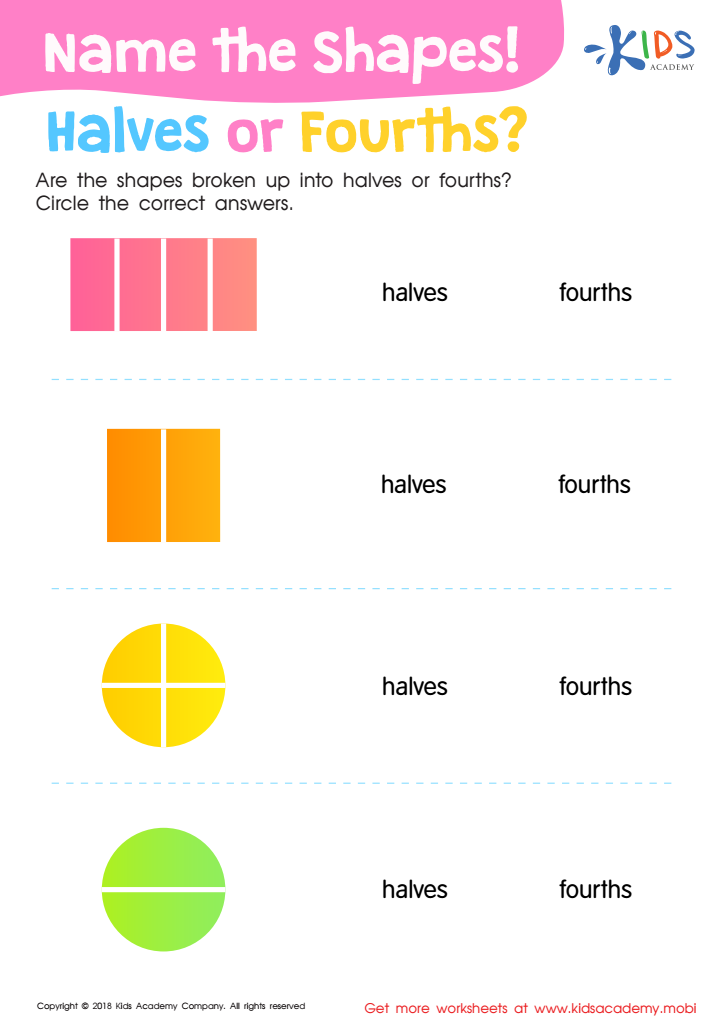

Name the Shapes Halves or Fourths? Worksheet
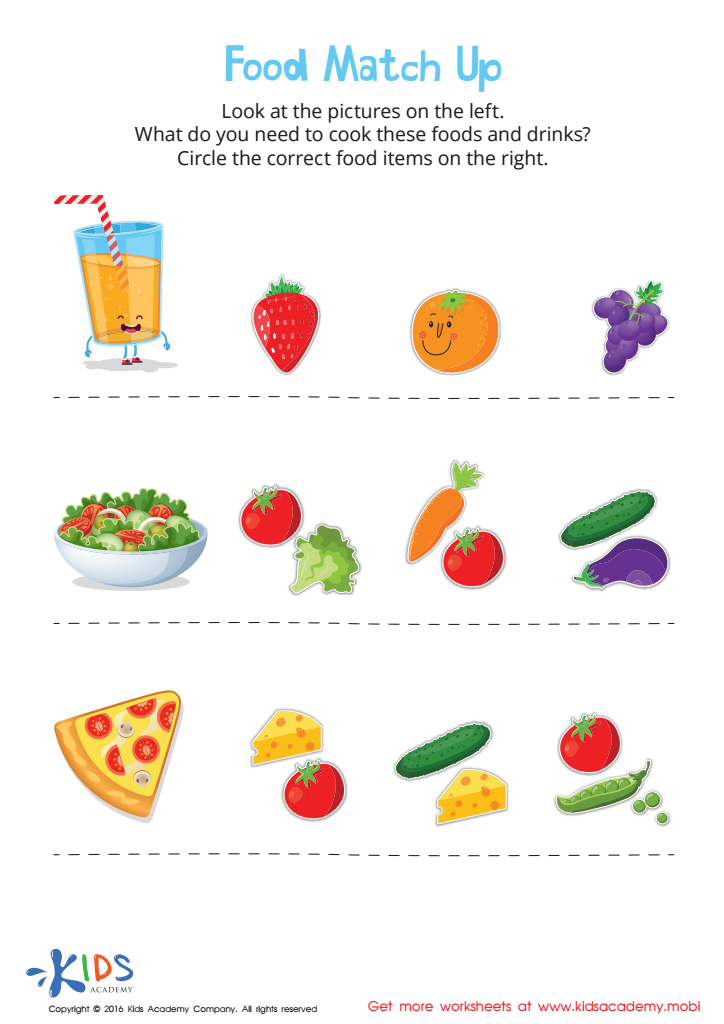

Food Match Up Worksheet
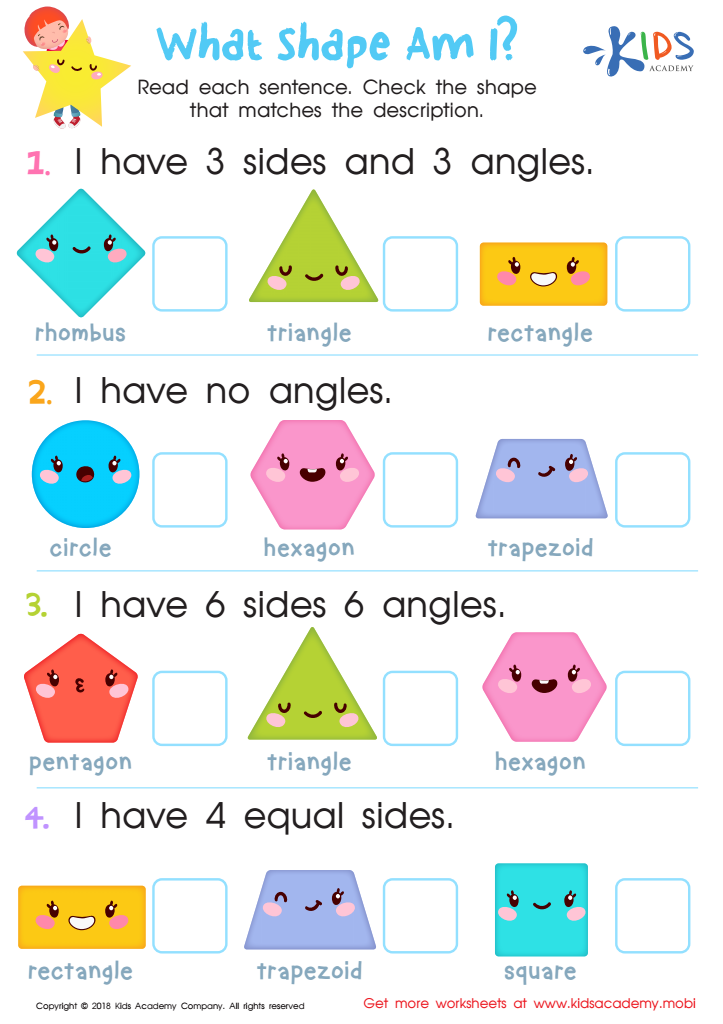

What Shape Am I? Worksheet
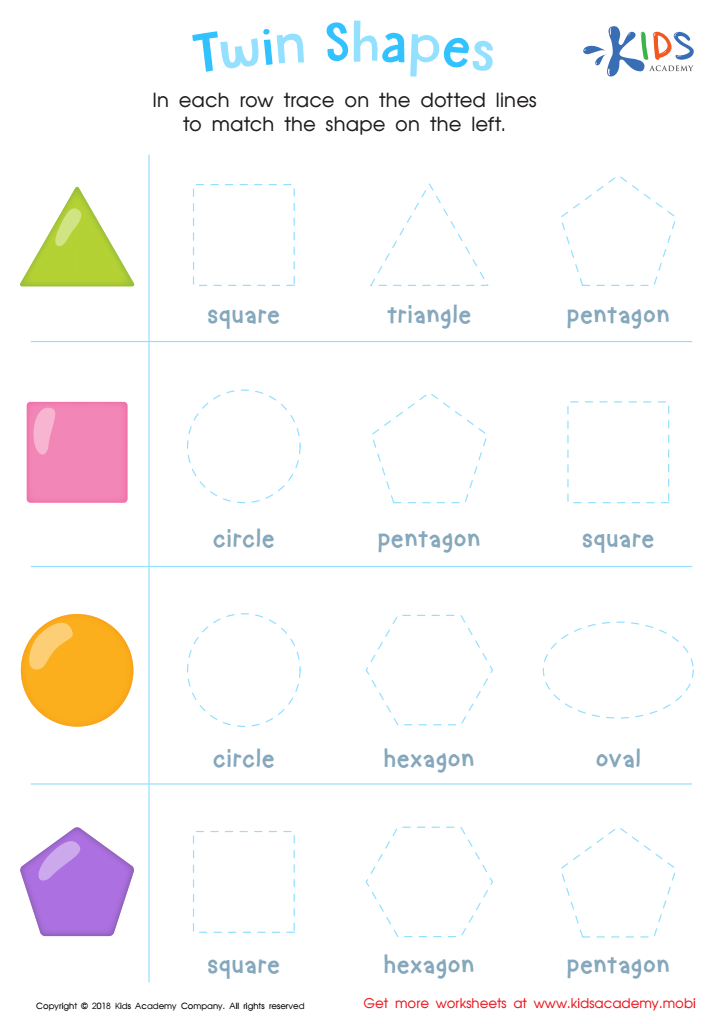

Twin Shapes Dot-to-Dot Worksheet
Visual discrimination is a crucial cognitive skill that involves the ability to distinguish between different shapes, sizes, colors, and patterns. For young children aged 3-9 years, developing strong visual discrimination skills, particularly in geometry, is essential for several reasons.
Firstly, visual discrimination lays the groundwork for mathematical understanding. Recognizing and categorizing shapes enhances a child's ability to comprehend geometry concepts, laying a foundational understanding that will later be built upon in more complex mathematical operations.
Secondly, it supports overall cognitive development and critical thinking. By having children identify and differentiate between objects, they engage in problem-solving, analytical thinking, and spatial reasoning—skills that are crucial not only in mathematics but across various subjects.
Additionally, fostering visual discrimination encourages creativity, as children learn to appreciate patterns and designs, which can inspire artistic expression. Furthermore, these skills enhance everyday life activities, assisting with reading readiness, as children learn to recognize letters and words by their shapes.
Lastly, visual discrimination skills promote self-confidence. When children successfully identify and categorize visuals, they experience a sense of achievement, which builds confidence in their abilities as learners. Thus, a focus on developing visual discrimination through geometric concepts significantly benefits young children's overall educational journey.
 Assign to My Students
Assign to My Students
































